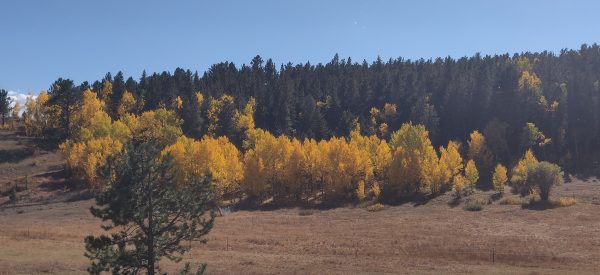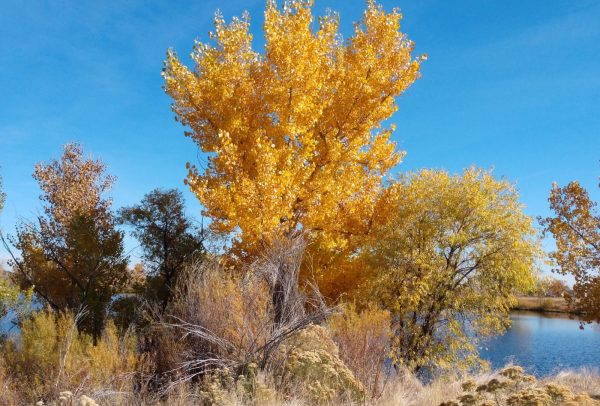
We are all enjoying and appreciating the exceptional fall colors this year. The yellows are especially rich, and the reds are especially vivid. What is going on when the green leaves turn colors and why are the colors so spectacular this year?
We know that the green color of the leaves comes from the pigment chlorophyll that makes it possible for plants to capture energy from sunlight and use it to make the sugars that feed the whole planet. When the long days of summer get shorter and shorter, highlighted by the fall equinox this year on September 22, the plants get less and less sunlight and less and less energy to make chlorophyll. When leaves contain less chlorophyll, other pigments become more dominant.
 Yellow pigments already exist in the leaves, and they easily come out. According to the US Forest Service, red pigments do not already exist in the leaves and are created in the fall in response to less light. Also, the Forest Service says that the best colors are present when there is a warm, wet spring, a summer that is not too dry and an autumn with warm days and cool nights. This somewhat describes our weather this year. And we did not experience early hard frosts which are known to weaken the colors.
Yellow pigments already exist in the leaves, and they easily come out. According to the US Forest Service, red pigments do not already exist in the leaves and are created in the fall in response to less light. Also, the Forest Service says that the best colors are present when there is a warm, wet spring, a summer that is not too dry and an autumn with warm days and cool nights. This somewhat describes our weather this year. And we did not experience early hard frosts which are known to weaken the colors.
Some plants that are especially showy this autumn are: our native Aspen, Cottonwood, Sumacs, Serviceberry, Sand Cherry and Chokecherry, non-native ‘Hot Wings’ Maple, Red Oaks, the Barberries, Ninebarks, Plumbago, Smoke Bush, some Viburnums like Nannyberry and Blackhaw, of course Burning Bush, Staghorn Sumac, some Spireas, and Aronia Berry. Honeylocusts have turned gold and Lindens turned yellow in a way they don’t often have a chance to do. Both Green Ash and Autumn Purple Ash are magnificent this fall, and we will sorely miss them when they have eventually succumbed to Emerald Ash borer.
A beautiful Autumn adds a richness to our lives for free, and along with the glorious Colorado warm sun makes us glad just to be alive. Winter is coming so enjoy being outdoors, out in your garden and out in Nature.





